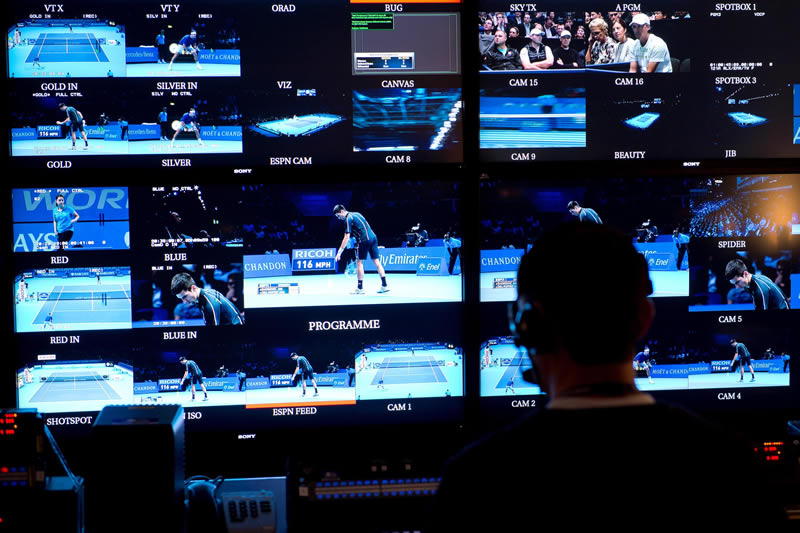At Indian Wells and Miami, two championships played in the United States, ATP Media Studios was able to implement an innovation that had been five years in planning and development.

Fans of tennis, a sport that has an estimated global audience of one billion viewers, witnessed an innovation that they probably did not notice when they followed the action at the Indian Wells and Miami tournaments: the two championships were broadcast remotely on TV. One tournament was played in the California desert and the other on the Florida peninsula. The entire TV production was in London.
ATP Media Studios, the content production arm of the men’s tennis circuit, is based in London. For the two championships played in the United States, they were able to implement an innovation that had been five years in planning and development.
Each tournament had coverage of the action on eight courts with cameras that feed the transmissions for the different rights licensees – ESPN in Latin America – and the organization’s own OTT platform. The cameras and the entire broadcast were managed directly from the ATP Media Studios controls, in a type of innovation that is a child of the pandemic and also reduces the carbon footprint by minimizing the transfer of personnel, equipment and international travel to carry out the broadcast during the almost two weeks of the tournament.
When the pandemic broke out in 2020 and major sporting events came to a standstill, remote transmissions were a halfway solution – almost the only possible solution – to generate sporting activity, entertainment and get the business moving. One of the first actions were tennis mini-tournaments – which were not official – and which took place in some European cities with minimal contact between players and obviously no audience.
These mini-tournaments were broadcast with automated cameras, remote streaming production and distribution, and statistics generated by artificial intelligence. They were the only possible morsel for gamblers who had an appetite for flesh-and-blood sport instead of video game simulations, another version of gamified sport that replaced real sport for a while.
Playsight, an Israeli company that since 2010 has been developing software to generate video with robotic cameras for broadcasting matches and especially for game analysis, was used for these championships during the pandemic. The system is used in 25 different sports, including four NBA franchises, 70 college sports programs and the USTA itself, the US tennis federation. Novak Djokovic and Pete Sampras have been early investors in the company.
It consists of seven remotely operated multi-angle cameras that use image processing and analytical algorithms to track strokes, ball trajectory, player movement, shot speed and spin. A tagging system makes it possible to generate in seconds a clip with, for example, all the reverse drives hit by a player in a training session for analysis by his coach.
There is much expectation about how remote transmissions can impact the television industry on a large scale and no longer from platforms that manage automated cameras that allow, for example, to broadcast volleyball, basketball, handball and indoor soccer matches in indoor stadiums with almost no human intervention.

But remote transmissions such as those made by Indian Wells and Miami Open already have precedents in France, a country that will host the Olympic Games in a few months.
The national basketball league in that country, which organizes more than 300 games per season, produces all its live games and even special programs remotely, without large transfers of equipment and trucks. The implementation of 5G networks will be another reason that will facilitate the production of sports content with smartphones and reduce the need for face-to-face staff linked to television operations.
Also due to the pandemic, the Tokyo 2020 Olympic Games – to be held in 2021 – forced to reduce the operations of broadcast teams and another innovation of the time came into action: the creation of digital twins. Virtual spaces were implemented so that TV directors and producers did not need to travel to Tokyo to analyze camera setups and positions in order to perform their tasks. All solutions were virtual and supported by the powerful cloud of Alibaba, the International Olympic Committee’s technology partner.
Remote broadcasts will become increasingly common in global sport, in a combination of solutions that bring cutting-edge technology and sustainability.